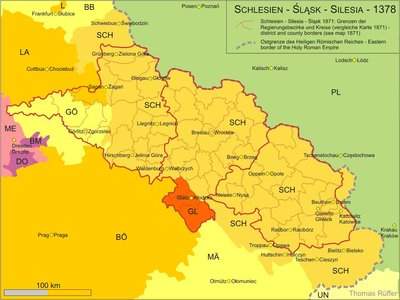| [Visitor (112.0.*.*)]answers [Chinese ] | Time :2022-06-12 |  Silesia Silesia
regional
The Silesian region has fertile soils and is rich in cereals, potatoes, hemp and sugar beets. Coal, iron, copper, lead, zinc and other mineral resources are abundant.Since the beginning of the 19th century, it has developed into one of the major industrial areas in Europe.The main cities are Wrocław, Katowice, Bittom, Khorzów, Gliwice, Sosnowiec and Ostrava in the Czech Republic. The largest cities in Silesia at the moment are the historic cities of Wroclaw and Katowice. Silesia is a resourceful and populous region. It is rich in coal and iron resources, and the local production of sand-like yellow crystals, Western European folklore believes that it can bring good luck, and later in honor of Frederick the Great was called Friedrich Gem Frederick Stone.Local agriculture is progressing, with the main agricultural products being cereals, potatoes and sugar beets. In the Middle Ages, Silesia first belonged to the Polish Piast dynasty, and later to the Kingdom of Bohemia and became part of the Holy Roman Empire.From 1526 onwards, it was brought under the rule of the Austrian Habsburg Dynasty with the Kingdom of Bohemia.In 1742, Frederick the Great of Prussia won the War of the Austrian Succession and obtained most of Silesia from Austria.These areas later formed the Silesian Province of Prussia...
After the first world war, Poland was restored, and Silesia was divided into three countries: Poland (Upper Silesia), De (Lower Silesia), and Jacques (Cheshin). After World War II, most of Silesia was included in Poland, with a smaller part belonging to East Germany and Czechoslovakia. After 1945, most of Silesia was incorporated into Poland. A small part was located in the German free state of Saxony, while the part ruled by austria-Hungary was now in the Czech Republic.
At present, most of Silesia is located in Poland and is currently divided into several provinces: Greater Poland, Lesser Poland, Lower Silesia, Lubuska, opole. Among them the provinces of Opole and Silesia are also known as Upper Silesia. The small part of Silesia in the Czech Republic is called "Czech Silesia" or "Cheshin", which is currently mainly part of the Moravia-Silesian Province, with the remainder located in Olomouc Province. Traditionally, Silesia is located between the Kwisa and Bobr rivers, while the former is known in the west as Upper Lusatia. Since Prussia once owned Lower Silesia, Upper Lusatia and Hoyersveda in present-day Lower Silesia in Present-day Germany are also considered to belong to Silesia.The two districts and the province of Lower Silesia are called Lower Silesia...
fold
population
After World War II, the inhabitants of Silesia were mostly Poles, Silesians, Germans and Czechs, while Moravians were a minority. According to the latest Polish national census in 2002, Slavic Silesians are the largest minority in Poland, with Germans in second place, most of whom live in Silesia. The main inhabitants of Czech Silesia are Czechs, Moravias and Poles.
Before World War II, the main inhabitants of Silesia were Germans, Poles and Czechs.The 1905 census showed that about seventy-five percent of the inhabitants were Germans and twenty-five percent were Poles. After the end of World War II, most of the German population fled their homeland, were either expelled by the Red Army or emigrated to foreign countries. Most Silesian Germans live in Germany today; Many people worked as miners in the Ruhr region, a profession that their ancestors had done in Silesia.After 1945, the West German government established and funded organizations, such as the Silesian Territorial Association, in order to make them more quickly integrated into the local society.One of the association's well-known but often controversial spokesmen was Herbert Hupka, a member of the German Christian Democratic Union. Mainstream German public opinion believes that these organizations will establish harmonious relations with Polish Silesians, which is gradually being realized... |
|
